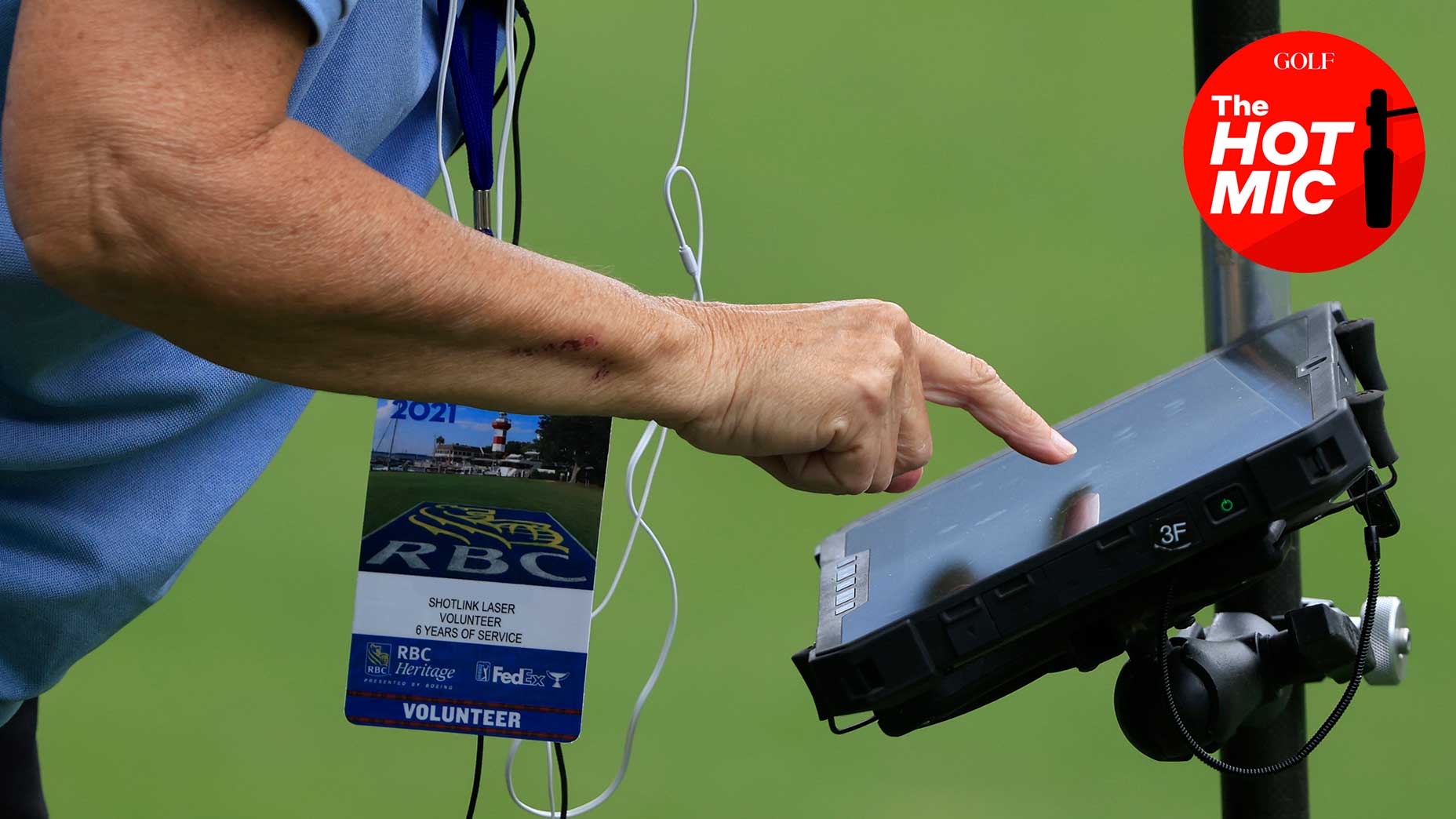
ShotLink, stat tables and strokes gained, oh my! Golf’s numbers guru is preparing for it all.
Getty Images
Welcome to another edition of the Hot Mic, GOLF’s weekly media column dedicated to the people (and stories) behind the action you watch each week.
Golf’s official library is unlike anything you’ve ever seen, and perhaps that’s why you’ve never heard of it.
Even for a library, this one is unusually bleak. The rows and columns of golf’s grand library are too many to count. The shelves are not filled with sacred texts or historical artifacts — not in the literal sense, at least. In fact, they’re hardly filled at all. Each structure is capable of holding only a single scribble, and most scribbles mean close to nothing at all.
As individual units, golf’s library possesses very little. But with the sum of its parts, the history of the game rolls through the halls of this sacred institution like a freight train.
Oh, and there’s one other thing to know about golf’s library. It belongs to the people, but it is owned by one man: Justin Ray.
Perhaps by now you’ve picked up that this library is not a physical one but rather a statistical one. It does not operate by the Dewey Decimal System. Rather, the shelves in golf’s library can be counted in pixels and operated by Excel functions. Ray is its warden, its bookkeeper, and its chief architect.
“It’s all generated from working in the game. Knowing ‘okay, what’s the tool that I need? What’s the tool that’s going to make me like an answer this question?’” Ray says. “That’s kind of the the way I look at it is: we go all the way back throughout the history of the game and tell the best story possible.”
Today, the library spans dozens of terabytes and hundreds of digital volumes — an ever-expanding collection of stats containing everything from major championship scoring average to strokes gained data from the 2018 John Deere. And Ray, now head of content at a “sports intelligence” firm named Twenty First Group, oversees every last decimal.
From his perch, he has near-instantaneous access to most pages of golf’s recorded history, which has turned his social media account into appointment viewing for golf fans seeking to contextualize history in real-time, and his library into one of the sport’s most valued treasures.
“When Rory wins his fourth major at age 25 at Valhalla in 2014, I can just go click, click, click on an Excel document and tell you everybody who won four majors at 25 or younger,” Ray says. “It just kind of grew in time. That was the first thing I built but then like, years later, at Golf Channel, I built a PGA Tour winner database. So I can tell you that ‘Oh, players with an X-shot lead are going to win X percent of the time or any kind of number of different things that you can extract from that.’”
Truthfully, Ray admits, work began on the library long before he had even realized it. Its unofficial groundbreaking came sometime in the newspaper era, when Ray was a child growing up in Houston and scouring back pages to dissect the previous night’s box scores. Even that wasn’t good enough, he found, and before long, he was keeping in-house stats.
“I was the kid who kept his little league stats on his dad’s computer, so I could quickly calculate my ERA or my batting average,” Ray says with a laugh. “Sports have always been kind of the background of my life, and stats is such an important part of that.”
He went to the University of Missouri with the goal of pursuing a career in journalism, and as destiny would have it, earned one of sports media’s golden tickets: an internship at ESPN. Before long, he’d been hired as a researcher.
Quickly he found that ESPN’s greatest strength (its size and breadth) was also its biggest weakness. There were few places to grow that someone else hadn’t already seized. But one property, golf, was still relatively unclaimed.
“I just kind of saw an avenue there to do it,” Ray says of the library’s inception, which formally began at ESPN 15 years ago. “I just said, ‘Hey, I love golf. No one’s really doing this. And look, there are all these different opportunities where I can build on the knowledge base of the sport, whether it’s historical databases that I’ve built or smarter ways to tell the stories of the game.’”
From ESPN he moved to Golf Channel, and when the grind of live television wore him out, to Twenty First Group, where he’s been for half a decade. In his current position, Ray’s statistical acumen is farmed out to dozens of clients, from golf equipment manufacturers to Sky Sports and The Athletic.
“At its core, I’m still doing what I’ve always done, which is trying to look up the smartest info and tell the best stories and come up with the most interesting notes,” he said. “And that’s the stuff that really excites me, too. I’m still at my core. I love that I still get giddy when I watch Hideki Matsuyama hit a 3-wood at a golf tournament.”
Each year, when the PGA Tour season dies down, Ray begins work on another wing of his library. This year, it’s strokes gained: total data from every major championship round ever, and Ray (ever the Tiger fanatic) can hardly contain his excitement.
“It’s about 65-70 percent done,” he said. “That’s going to be able to tell you Bobby Jones’ strokes gained against the field compared to Jack, compared to Tiger, compared to Walter Hagen, or whatever it might be.”
Still, Ray admits, his work is just a fraction of the bigger picture. An information revolution is upon the professional sports world — one driven by analytics and advanced stats — and those who can make sense of the numbers are only scratching the surface of how to utilize them.
“More information isn’t always the best answer, right? You need to be able to parse through it and find the specific things that are most beneficial and helpful to a player, a coach, or in my line of work,” he said. “Just having more information isn’t necessarily the answer. You’ve got to have the right information.”
“I think there’s still a place in the sport for traditional statistics if they’re able to tell the story in a good way,” he continued. “But at the same time, you know, we have all these new statistics that can tell really great stories, so long as you’re able to parse that correctly, and say the things that actually matter.”
Yes, golf’s library is lovely. But just wait till you see what’s coming next.










